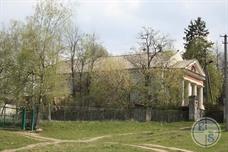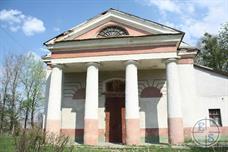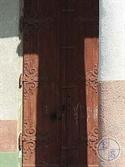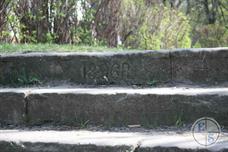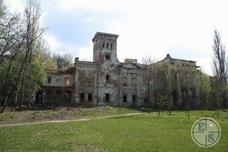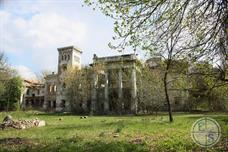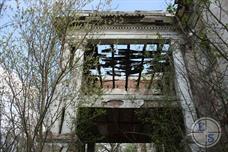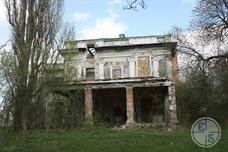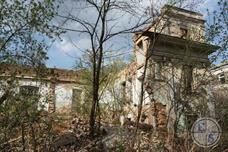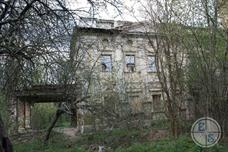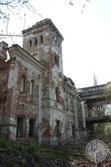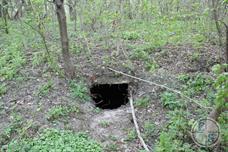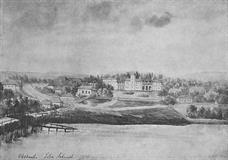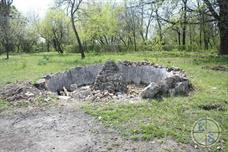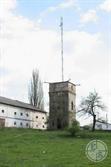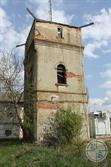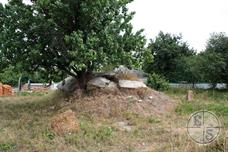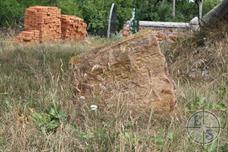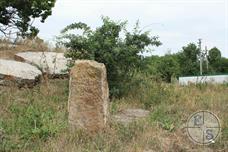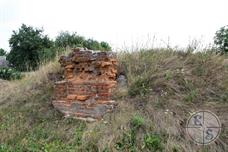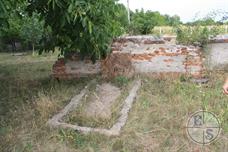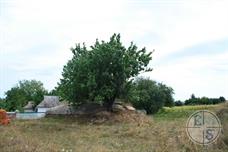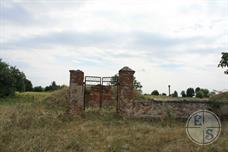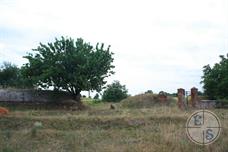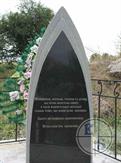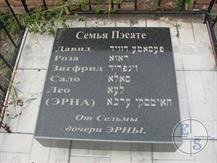Obodovka
Obodovka, 2011, 2012
The name of the settlement Badovka on Bratslav found in the documents of the XVI century. In the middle of the XVII century. it was quite a large urban settlement. On the map of Bratslav province in 1650 by Guillaume de Boplana Obodovka shown as a city with fortifications. In 1651 Obodovka entered into the possession of Prince Janusz Vishnevetzkogo.
In the second half of the XVIII century Obodovka becomes the property of the genus Sobanskih.
In the second half of the XVIII century Obodovka becomes the property of the genus Sobanskih.
Jews have lived in Obodovka, probably from the first half of the XVII century. This is indicated by references to a certain district. Meir of Badovki in the responsa of Rabbi Gaff p. Nathan-Note Kagan on the case of "Agun", lost her husband during the Cossack massacre of 1648 - 1649 gg. If there is a Jewish community and, most of all, it was completely destroyed during the Cossack wars.
Several Jewish families settled in Obodovka location in the middle of the XVIII century. In 1765 there were 33 Jews who lived in five houses; all the community of 266 people has been attributed, including residents of 28 nearby villages.
In 1852, 29 Jewish craftsmen were registered in Obodovka.
In 1889 here there were 808 Jews, containing two synagogues; at the beginning of the XX century. in the village were three synagogues and two for the community (in the Old and New Obodovka).
Due to its location at the crossroads of the main roads, the township was one of the shopping centers the edge. On Tuesdays there were bazaars. Almost all shops and stores (more than forty) belonged to Jews (among a variety of shops was even a shop artificial coral). Jews owned pharmacies and a lumberyard, a water mill, an inn and a café.
Several Jewish families settled in Obodovka location in the middle of the XVIII century. In 1765 there were 33 Jews who lived in five houses; all the community of 266 people has been attributed, including residents of 28 nearby villages.
In 1852, 29 Jewish craftsmen were registered in Obodovka.
In 1889 here there were 808 Jews, containing two synagogues; at the beginning of the XX century. in the village were three synagogues and two for the community (in the Old and New Obodovka).
Due to its location at the crossroads of the main roads, the township was one of the shopping centers the edge. On Tuesdays there were bazaars. Almost all shops and stores (more than forty) belonged to Jews (among a variety of shops was even a shop artificial coral). Jews owned pharmacies and a lumberyard, a water mill, an inn and a café.
The huge palace complex built by Michael Sobanskim began in 1800, later he is still being completed and expanded several times. Near the palace known parkostroitelem Dionysius Mickler was laid park of about 17 hectares. a variety of exotic plants were planted in the park.
After the revolution in the palace was posted Bessarabia municipality, until 1944 the palace belonged to the farm to them. Kotovsky, and after the war it housed various district organizations. In 1959, the palace and the park were transferred Obodovsky boarding school. The kids seem to him to finish off - now comes full Kaput palace, and no restoration it will not help.
After the revolution in the palace was posted Bessarabia municipality, until 1944 the palace belonged to the farm to them. Kotovsky, and after the war it housed various district organizations. In 1959, the palace and the park were transferred Obodovsky boarding school. The kids seem to him to finish off - now comes full Kaput palace, and no restoration it will not help.
During the Civil War the community Obodovka hard hit by the pogrom. In the first decade of May 1919 peasant gang who brought before the bloody mayhem in Trostyantse, I took Obodovka. The Jewish men were gathered in the market square and shot with a machine gun. According to various reports, the deaths of 150 300 people.
After the war the town was on the verge of dying. From the 500 who lived there before the war, Jewish families have no more than 40 men, 20 - 30 young people and 150 children.
The Jewish orphanage, which opened on March 18, 1923, supported financially Evobschestkom and "Joint". It lived up to 60 children whose parents were killed in the pogrom.
The Jewish population in 1923 was 411 people.
In 1930-ies. in the town of Jewish collective farm named after Stalin it was organized.
Up until the beginning of the war operated a synagogue here.
Before the war, there lived 535 Jews (6% of the population).
After the war the town was on the verge of dying. From the 500 who lived there before the war, Jewish families have no more than 40 men, 20 - 30 young people and 150 children.
The Jewish orphanage, which opened on March 18, 1923, supported financially Evobschestkom and "Joint". It lived up to 60 children whose parents were killed in the pogrom.
The Jewish population in 1923 was 411 people.
In 1930-ies. in the town of Jewish collective farm named after Stalin it was organized.
Up until the beginning of the war operated a synagogue here.
Before the war, there lived 535 Jews (6% of the population).
July 28, 1941 in Obodovka entered the German tank unit and Romanian occupation administration was established in August of the same year. The Jewish quarter was turned into a ghetto and enclosed by barbed wire.
In November 1941, Obodovka arrived about ten thousand Jews deported from Romania. Those who bribed Romanian officers settled in the homes of local Jews for 15 - 16 people in the room, the others were placed in barns and stables.
In the winter of 1941-42, several thousand prisoners of the ghetto died of typhus epidemic, among them the family "boyanovskogo" rabbi. Removal of dead bodies was no one to bury them only in April 1942 farmers for fear of epidemic forbade Jews to use wells. Some locals still helped the ghetto, leaving the fence buckets of boiled potatoes.
Council ghetto assigned to the gendarmerie, the police organized a Jewish and a soup kitchen and hospital for 12 beds was created using the material support of Aid Committee in Bucharest.
The inhabitants of the ghetto to force used in construction and agricultural work. In 1943 Obodovka were about 1,600 Jews, many of them kept in touch with the guerrillas.
In November 1941, Obodovka arrived about ten thousand Jews deported from Romania. Those who bribed Romanian officers settled in the homes of local Jews for 15 - 16 people in the room, the others were placed in barns and stables.
In the winter of 1941-42, several thousand prisoners of the ghetto died of typhus epidemic, among them the family "boyanovskogo" rabbi. Removal of dead bodies was no one to bury them only in April 1942 farmers for fear of epidemic forbade Jews to use wells. Some locals still helped the ghetto, leaving the fence buckets of boiled potatoes.
Council ghetto assigned to the gendarmerie, the police organized a Jewish and a soup kitchen and hospital for 12 beds was created using the material support of Aid Committee in Bucharest.
The inhabitants of the ghetto to force used in construction and agricultural work. In 1943 Obodovka were about 1,600 Jews, many of them kept in touch with the guerrillas.
In February 1944 the retreating German soldiers passed through Obodovka, robbed and killed the Jews. At the beginning of March in the Austrian part of the town arrived, which officers and soldiers handed out food to the Jews and established protection of the ghetto from looters.
During the occupation on the agricultural farm 3 km from Obodovka on the way to sugar refining plant several thousand deported Jews were killed. Memorable sign on this place there. According to the conclusion of the Commission to investigate the atrocities of the Nazis in the occupied territories during the war Obodovka destroyed about eleven thousand Jews.
In 1943, in the district acted Obodovka partisan group, the organization which took an active part local resident Meir Caves.
Some time after the war in the village community life continued.
At the turn of the 1990s. in Obodovka was about 20 Jews in the late 1990s. - Three.
In 2012, the Jews did not live here.
V.Lukin, "100 Jewish settlements in Ukraine"
During the occupation on the agricultural farm 3 km from Obodovka on the way to sugar refining plant several thousand deported Jews were killed. Memorable sign on this place there. According to the conclusion of the Commission to investigate the atrocities of the Nazis in the occupied territories during the war Obodovka destroyed about eleven thousand Jews.
In 1943, in the district acted Obodovka partisan group, the organization which took an active part local resident Meir Caves.
Some time after the war in the village community life continued.
At the turn of the 1990s. in Obodovka was about 20 Jews in the late 1990s. - Three.
In 2012, the Jews did not live here.
V.Lukin, "100 Jewish settlements in Ukraine"
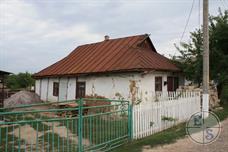 |
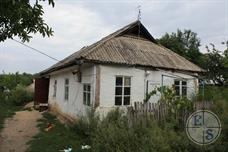 |
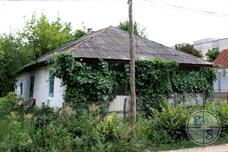 |
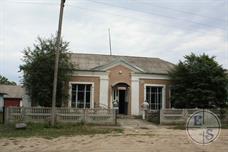 |
| The old houses of the Jewish shtetl building | |||
 |
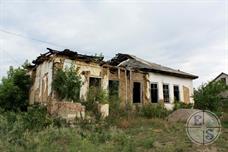 |
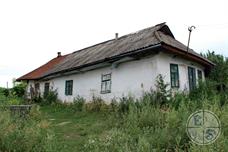 |
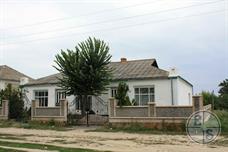 |
| There used to be a synagogue | |||
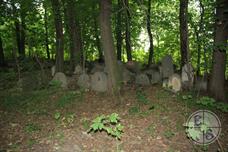 |
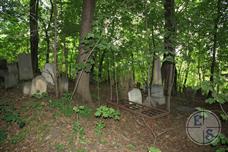 |
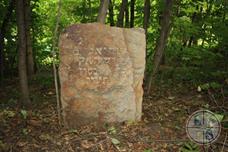 |
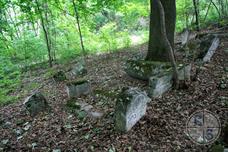 |
| The bed at the cemetery - a necessary thing | |||
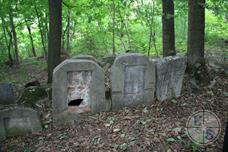 |
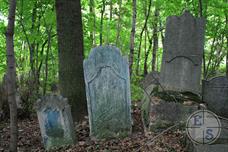 |
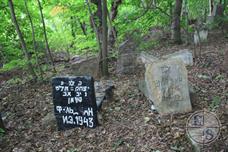 |
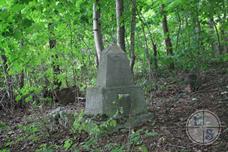 |
| One of wartime graves | |||
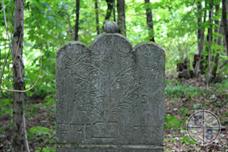 |
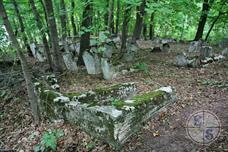 |
 |
 |
Beyond the village there is another cemetery older. Here are preserved two large mass graves of victims of the pogroms of 1919-1920.
Vinnitsa Region

My shtetl
My shtetl
Jewish towns of Ukraine
Jewish towns of Ukraine

